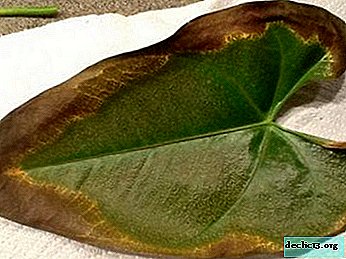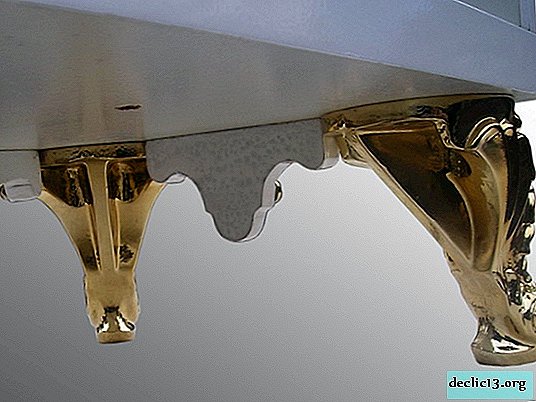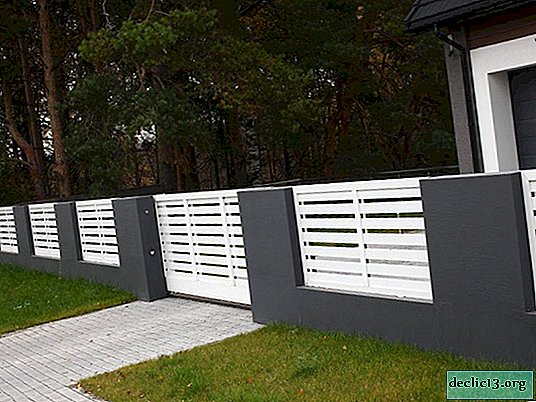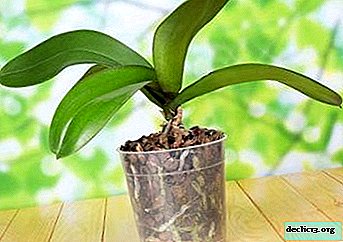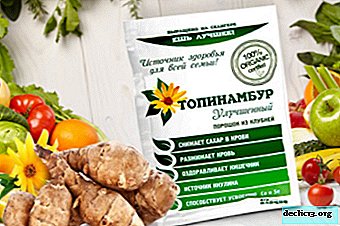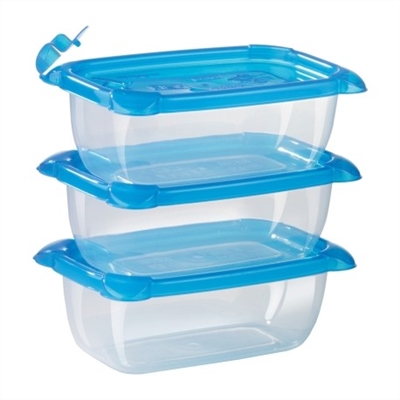Features of growing pomegranate at home from stone and caring for it

Translated from Latin, the name of the pomegranate “Punicia” means “Punic or Carthage”, since the tree is widely distributed in Carthage, present-day Tunisia. And another name “Granatus” in translation means “grainy”.
Among Italians, pomegranate is associated with an apple, which has caused strife in Paradise. In the wild, the plant is found in Asia and southern Europe, and cultivated pomegranate can be seen even in your own home. To grow a miniature tree is real, having one tiny bone. The process of reproduction by seeds is not simple, but feasible. Read on about whether it is possible to grow pomegranate from a seed, what to do for this, whether the fruits will be produced as a result of growing; You will also learn how the plant looks in the photo after it has grown.
We grow it right: advantages and disadvantages of the method
 Obtaining pomegranate from seeds is an interesting occupation., especially if in the end, the result of labor can be tasted. The seed method is not the most popular, there are pros and cons, which are more detailed.
Obtaining pomegranate from seeds is an interesting occupation., especially if in the end, the result of labor can be tasted. The seed method is not the most popular, there are pros and cons, which are more detailed.
Advantages of the seed method:
- it is possible to plant seeds at any time of the year;
- fast germination;
- availability of planting material;
- in one procedure, you can get up to a dozen sprouts, from which the strongest are chosen.
Disadvantages:
- this method is quite troublesome and lengthy;
- the need for a warm and bright place in the apartment;
- uneven germination;
- seeds are not always of appropriate quality.
What season is the best time to propagate?
It is possible to plant seeds for seedlings at any time of the year, in the presence of adapted conditions for growing. It is best to germinate the seeds in greenhouse conditions, and when germinating, sprout with phytolamps. Therefore, in order to minimize labor costs, it is desirable to plant seeds in February-March, then the outdoor temperature rises and the length of daylight increases.
On a note. Seeds planted at the end of winter germinate in 2-3 weeks, and sprouts from grains planted at another time, you can wait 2-3 months.We select and prepare
Priming
 Exotic fruit can grow in any soil. For him, you do not need to look for unique components. For planting seeds, soil for seedlings, a universal mixture for indoor flowers, a soil mixture for citrus fruits are suitable. In general, the land that will be available in the garden store will do. The only thing you should pay attention to: acidity pH 5.5-7.
Exotic fruit can grow in any soil. For him, you do not need to look for unique components. For planting seeds, soil for seedlings, a universal mixture for indoor flowers, a soil mixture for citrus fruits are suitable. In general, the land that will be available in the garden store will do. The only thing you should pay attention to: acidity pH 5.5-7.
If there is a desire to prepare the earth yourself, then its optimal composition is as follows:
- turf land;
- peat;
- coarse fractional sand.
These components should be taken in equal proportions. All components must be rinsed with boiling water as a disinfection. Peat can be replaced with humus. A prerequisite is drainage. The soil should be well drained. As the drained material is used:
- expanded clay;
- gravel;
- crushed stone.
Peat tablets are an alternative to the soil.that are laid out on a pallet and watered abundantly. In this case, you can do without picking seedlings.
Important. Soil for planting seeds must certainly be warm or at room temperature.Pot
For planting seeds, use any containers that you like:
- containers
- pots;
- plastic seedling boxes;
- cups.
It is advisable that the pots are not deep. In low and long tanks, the soil dries well, there is no fluid stagnation. The larger the surface area, the more spacious the young shoots.
Experienced flower growers recommend growing seedlings in clay pots. Natural material does not retain moisture in the soil, which prevents the appearance of decay. Also, clay does not heat up when it is in warm conditions, thereby the roots are protected from overheating.
What to do with the maternal fetus?
 As a maternal fetus, a large, well-ripened fetus that does not have rot, mold, is suitable. Taste qualities must also be on top, otherwise the fruits will accordingly be tasteless.
As a maternal fetus, a large, well-ripened fetus that does not have rot, mold, is suitable. Taste qualities must also be on top, otherwise the fruits will accordingly be tasteless.
Before directly planting grenades should:
- break;
- extract seeds;
- rinse thoroughly under running water.
High-quality seeds with good germination are beige or ivory. They are solid and durable to the touch. If the resulting seeds are green in color and soft enough, then this is an unripe material that will not germinate. It is possible to purchase ready-made seeds for planting in garden shops.
In this case, pay attention to:
- packaging date, the fresher the seeds, the better;
- variety;
- name of the manufacturer;
- shelf life;
- the weight.
Before planting, the seeds should be soaked in a solution of Epin or Zircon for 10-12 hours. This procedure stimulates the rapid germination of seeds. Pomegranate seeds left without moisture will quickly dry.
On a note. Seed germination of seeds reaches 97%.How to plant a house pomegranate tree from seeds?
When everything you need is fully prepared - soil, pot, seed, then you should proceed to the very procedure of sowing seeds.
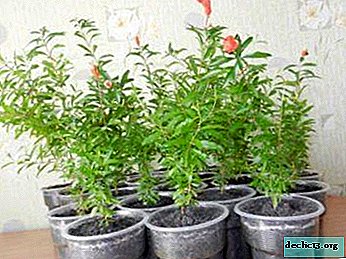 Spread the seeds evenly over the soil surface at a depth of 1 cm. Then sprinkle with earth a layer of 1.5 cm.
Spread the seeds evenly over the soil surface at a depth of 1 cm. Then sprinkle with earth a layer of 1.5 cm.- On top, moisten with spray water.
- It is necessary to create greenhouse conditions. The easiest way is to cover with polyethylene.
- The temperature for rapid germination must be maintained within + 25-30 ° C.
- Provide seedlings with regular watering with warm water and access to fresh air.
- As you grow, remove the greenhouse. However, germination is usually uneven.
- When the sprouts stretch 3-5 cm up, they will need a pick.
- After 3 months, repeat the procedure.
- Leave only strong, healthy shoots for pomegranate.
Will there be fruit?
The first flowering of pomegranate occurs at the age of 10 months to a year. But this is only possible with sufficient lighting and proper care. A plant can bloom several times a year.
If there is a desire to receive fruits, then although it is a pity, beautiful blossoms should be cut off. It is also possible to pollinate flowers yourself using a cotton swab to get an ovary. For such care, pomegranate will thank the appearance of delicious and sweet fruits.
How will they differ from those grown in the garden?
The fruits of a pomegranate are massive, round in shape, in a bright burgundy color. The peel is dense, inside there are about 1200 grains. They practically do not differ from garden ones, they have the same taste characteristics. The only difference is size. Home-made pomegranate in the diameter of 5-8 cm, and on one tree can grow about 10 pieces.
Photo
And so look at the photo already grown room grenades.





Care
After young seedlings appeared and they were transplanted into a container, the next important moment comes - care for young indoor plants during the cultivation of seeds. It is necessary:
- Provide a bright and warm place.
- Monitor the condition of the soil, prevent strong drying of the soil.
- Preferably, the sprouts are sprayed with water from a spray bottle.
- For the successful development and rapid growth of the root system of the pomegranate, space is needed, therefore it is better to choose a landing capacity of a rather large size.
- Mandatory drainage in the pot.
- It is planned to pinch the top of the head, starting with the fourth pair of leaves, which prevents the extension and bifurcation of the stem.
- In winter, it will not be superfluous to perform additional illumination. Otherwise, with a lack of lighting, the plants will stretch or completely slow down growth.
Nuances
- Southern culture at home needs to create favorable conditions, first of all - this is lighting. The plant should be placed on the south or southeast window sills in order to create the longest daylight hours. In summer, the optimum temperature for growing is + 18-23 ° С.
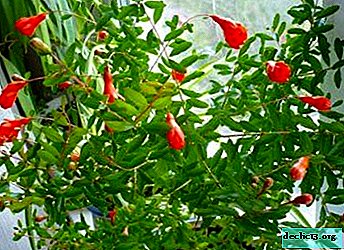 Moderate hydration is required, approximately 1 time in 7-10 days. It is necessary to monitor the drying out of the upper soil layer. As soon as the soil is dry - immediately water. In autumn and winter, water procedures should be minimized; 1-2 times a month will suffice.
Moderate hydration is required, approximately 1 time in 7-10 days. It is necessary to monitor the drying out of the upper soil layer. As soon as the soil is dry - immediately water. In autumn and winter, water procedures should be minimized; 1-2 times a month will suffice.- During the growing season, do not forget about top dressing. Pomegranate should be fed no more than 2 times a month with complex mineral fertilizers. Up to 4-5 years, the tree requires an annual transplant. In the future, the procedure is done every 3 years. Preferably in early spring.
- For a beautiful and neat crown, you should regularly perform the trimming procedure. Form a pomegranate from 4-6 branches. However, you do not need to get involved. Loss of most of the crown will significantly weaken the plant. In summer, exclusively young shoots are removed, which will stimulate flowering in the future.
- During wintering, it is not advisable to disturb the plant with top dressing, transplanting and other procedures. At this moment, it is important to ensure the temperature in the room within + 16-18 ° C. During the dormant period, pomegranate drops its leaves, and this process is considered normal, natural.
If not taking root
Pomegranate is unpretentious in care. He does not need to create special conditions. However, in the case of an improperly selected location, improper soil composition, and the presence of drafts, perhaps the plant will dry out. In this case, you need to review the parameters of the fetus. If necessary, rearrange in another place where there is more light.
Reproduction by seed method of pomegranate - an easy task, but painstaking. However, in the end, a bush will turn out to be superior in beauty to any indoor plants, while it is not capricious, for him the main thing is a lot of light and sufficient watering.

 Spread the seeds evenly over the soil surface at a depth of 1 cm. Then sprinkle with earth a layer of 1.5 cm.
Spread the seeds evenly over the soil surface at a depth of 1 cm. Then sprinkle with earth a layer of 1.5 cm. Moderate hydration is required, approximately 1 time in 7-10 days. It is necessary to monitor the drying out of the upper soil layer. As soon as the soil is dry - immediately water. In autumn and winter, water procedures should be minimized; 1-2 times a month will suffice.
Moderate hydration is required, approximately 1 time in 7-10 days. It is necessary to monitor the drying out of the upper soil layer. As soon as the soil is dry - immediately water. In autumn and winter, water procedures should be minimized; 1-2 times a month will suffice.